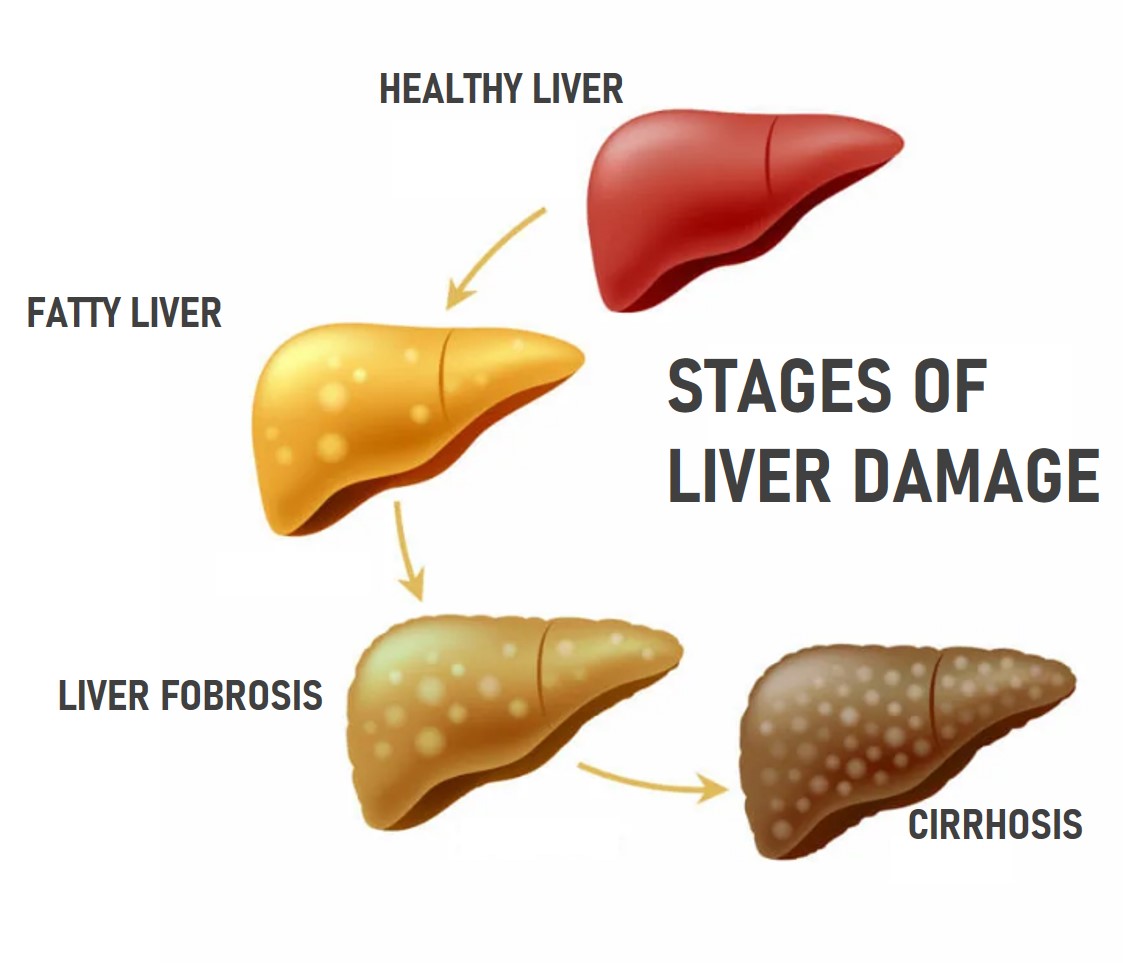Cirrhosis is a late stage of scarring (fibrosis) of the liver caused by many forms of liver diseases and conditions, such as hepatitis and chronic alcoholism.
What is cirrhosis of the liver?
Each time your liver is injured — whether by disease, excessive alcohol consumption or another cause — it tries to repair itself. But cirrhosis is that stage when your liver is permanently damaged. The scar tissue of liver keeps it from working properly. The damaged liver blocks the flow of blood through the liver and slows down the liver’s ability to process nutrients, hormones and natural toxins.

It is becoming more and more common with about 10 lakh new patients being diagnosed with liver cirrhosis every year in India alone! The primary causes of the disease included Hepatitis B and C till some time ago but now it is primarily due to alcohol abuse and non-alcoholic fatty liver disease.
Symptoms of Cirrhosis of the Liver
Individuals with cirrhosis may have few or no symptoms and signs of liver disease. Some of the symptoms may be nonspecific, that is, they don’t suggest that the liver is their cause. Some of the more common symptoms and signs of cirrhosis include:
- Yellowing of the skin (jaundice) due to the accumulation of bilirubin in the blood
- Fatigue
- Weakness
- Loss of appetite
- Itching
- Easy bruising from decreased production of blood clotting factors by the diseased liver
Causes of cirrhosis
Cirrhosis is a long-term liver disease and it can take many years for liver damage and finally leading to cirrhosis. Initial causes include:
- Chronic alcoholism
- Hepatitis C
- Non-Alcoholic Fatty Liver Disease
- Bile duct disease
- Genetic disease such as Wilson disease, hemochromatosis, and glycogen storage diseases
Who is most at risk?
You are more likely to get cirrhosis of the liver if you:
- Abuse alcohol for many years
- Have viral hepatitis
- Have diabetes
- Are obese
- Inject drugs using shared needles
- Have a history of liver disease
- Have unprotected sex
Cirrhosis Treatment & Management
The goal is to minimize the symptoms and try to slow down the damage by protecting healthy liver tissues. Cirrhosis treatment majorly includes certain medications and lifestyle changes, as below:
- Healthy diet and regular exercise
- Limiting salt intake
- Completely stop alcohol consumption
- Practicing safe sex
- Not sharing needles, razors, toothbrushes, or other personal items with others
- Talking with your gastroenterologist about all of the medications, vitamins, and supplements
- Liver transplants may also be required, especially in more advanced cases
Although scarring from liver disease causes permanent damage, it’s still possible to live a long life. Depending on the underlying cause, it’s possible to slow or stop cirrhosis from worsening.





No comments yet.